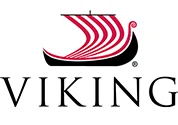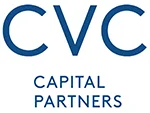 Ken MacFadyen |
In a Q&A discussion, BackBay Communications Head of Content Ken MacFadyen discussed the catalysts driving content-marketing strategies in financial services.
As Head of Content, how would you describe your role?
Stepping back a bit, at BackBay Communications, we’re focused exclusively on financial services. So, content strategies in finance tends to be different than what you might see in traditional retail or consumer industries, where content marketing often revolves around fostering relationships with influencers. In financial services, content is critical to help position the executives or portfolio managers themselves as influencers and then disintermediate the traditional business media to reach specific end markets directly.
The other major difference is that with many of the organizations we work with, their marketing efforts before we were hired tend to range from somewhat sophisticated to nascent. It’s often the case that an investment firm will initially look to engage with BackBay for help in repositioning their go-to-market strategy or to inquire about fairly straightforward PR work. There’s a misperception that the subject matter is too complex to hand off to a third party. That said, once they see how integral content can be to support PR activities and convey a more nuanced narrative, they’re generally quick to embrace content.
|
|
I mention this because I see my role as being both an advocate to help clients appreciate how impactful content can be and, more importantly, to execute on strategy and develop content that hits on all of the objectives we lay out. This is critical to build credibility and trust. Generally, our primary contact will understand our role in creating content. When you go a level deeper, we continually need to prove how we can elevate portfolio managers or any subject-matter expert to capture their voice and views and convey it in a way that resonates with a sophisticated target audience.
So, how do you build trust when working within some of these very specialized sectors?
I think it goes back to our background as journalists. I covered private equity and asset management for over a decade as a reporter and editor, so I like to think I have a pretty good idea of what makes the industry tick. I think roughly half our broader team at BackBay spent time as financial journalists at one point or another. A big part of our value proposition is that we can bring a depth of understanding around our client’s business and help them articulate their edge in a way that appeals to a wider audience.
Specific to content, though, whenever we’re working with portfolio managers or even software engineers within fintech firms, we need to continually demonstrate that we understand the market and can speak their language. And we’ll create content by researching market trends, gaining a thorough understanding about what’s topical or relevant, and conduct interviews with subject-matter experts to tease out specific views and capture their voice. Ultimately, trust is built through a finished product they’re happy with, but doesn’t require much work on their end other than a phone call.
Are you finding that more clients are interested in content marketing?
We’re definitely seeing more interest. In fact, we published a white paper last year quantifying that 88 percent of the top 200 global asset managers are now utilizing content marketing in some form as part of their integrated PR program. As we highlighted in the paper, the catalyst for many firms was the global financial crisis. After 2008, the financial services sector, broadly, had to rebuild their trust with clients and content gave them a platform to tell a story that offers context and instills credibility. This was also the year the iPhone was introduced and ecommerce really took off, so asset managers suddenly had at their disposal platforms such as LinkedIn, Twitter and even Facebook. So, as they began to create more content they also had the means to distribute it directly to the audiences they wanted to reach.
I’d note, though, that as these catalysts have driven the industry at large to embrace content marketing, it’s become something of an expectation rather than a “nice to have.” I’d equate it to a website maybe 15 years ago. I remember a time when certain private equity firms didn’t have a web presence. The holdouts eventually got online to demonstrate that the lights were on at their firm. Content, today, is seeing the same dynamic take place. In fact, private equity is perhaps the biggest laggard when it comes to embracing outbound marketing. But in a separate white paper that we published recently, we found that over 60 percent of the top 100 global PE firms produce content regularly. They’re not as prolific as traditional asset managers who have more resources to dedicate to the effort, and they also aren’t as sophisticated in using social media to distribute their content, but the fact that over half are producing thought leadership was surprising to me.
What are the key elements of a successful content strategy?
The biggest challenge we encounter is trying to convince our clients not to be promotional with their content. Promotional messaging is best left to paid advertisements or certain owned media. For content to be effective, it must entertain or inform and the second you try to “sell” something you’ll lose your reader. It’s English 101, but if you show versus tell, you’ll gain the trust of an audience that’s naturally inclined to seek out and identify any bias that may exist.
Beyond that, we’ll generally point to what we refer to as the “Four C’s” of implementation: Champion, Cadence, Coordination and Connect. The content champion is a subject-matter expert who embraces the role. If you have a true content champion, they’ll push these projects through to the finish line. If you have to pull an author kicking and screaming, the effort will die on the vine.
Cadence, meanwhile, is critically important to build an audience. You don’t need to be as prolific as Nora Roberts; as long as you’re consistent in how often you publish content, you can set audiences’ expectations. It will hurt your content marketing efforts if you publish three pieces in January and then don’t produce anything else for the balance of the year. It looks haphazard and underscores a lack of commitment.
Coordination refers to how content is used as part of an integrated communications strategy. To get the most out of the effort and maximize the return on investment and time, you want to make sure you’re distributing content through as many mediums as possible and utilizing a range of distribution strategies. Content, if it’s topical and relevant, can inform media pitches; it can serve as discussion points on conference panels; it can drive SEO strategies; it’s invaluable to communications. Organizations can maximize the impact of thought leadership, but it takes work and thoughtfulness to leverage the content for all it’s worth.
Finally, the “fourth C” is that content must connect. It needs to be authentic, transparent and engaging. We highlighted in each of the white papers that the best content tells a story, complete with tension, complications and resolution.



 FGS Global represents private equity firm Thoma Bravo as it makes a $4.6B bid for Darktrace, a UK-based cybersecurity artificial intelligence firm.
FGS Global represents private equity firm Thoma Bravo as it makes a $4.6B bid for Darktrace, a UK-based cybersecurity artificial intelligence firm.
 Edelman handles Viking Holdings, the river and ocean luxury cruise line that plans to raise $1B via an IPO priced in the $21 to $25 per share range.
Edelman handles Viking Holdings, the river and ocean luxury cruise line that plans to raise $1B via an IPO priced in the $21 to $25 per share range. Teneo is handling the initial public offering of CVC Capital Partners, one of Europe’s largest private equity firms with nearly $200B in assets under management.
Teneo is handling the initial public offering of CVC Capital Partners, one of Europe’s largest private equity firms with nearly $200B in assets under management. Brunswick Group represents Endeavor Group Holdings as it agrees to go private via its acquisition by Silver Lake technology investment firm, which is handled by Edelman Smithfield.
Brunswick Group represents Endeavor Group Holdings as it agrees to go private via its acquisition by Silver Lake technology investment firm, which is handled by Edelman Smithfield.


 Have a comment? Send it to
Have a comment? Send it to 
No comments have been submitted for this story yet.